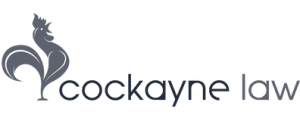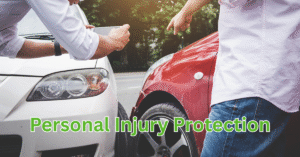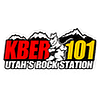Personal Injury Protection: A Clear Guide for Utah Drivers
Car accidents hit fast and hard. Sirens, paperwork, and surprise bills all landing at once. Even a tap on the bumper can drop an ER bill in your lap, keep you off the job for a week, and clog your kitchen table with claim forms. Personal Injury Protection (PIP) takes action before the blame game starts. It pays your doctor, sends you partial paychecks, and even chips in for house-cleaning while you’re laid up.
Utah says every driver has to carry a basic amount, yet plenty of folks still shrug and hope for the best. Let’s fix that. Upon scrolling to the bottom, you will know what Personal Injury Protection covers, where it stops, and how to choose the limit that won’t wreck your budget.
Key Points You Should Know
- Pays you first, not the at-fault driver
- Covers family members and housemates riding with you
- Replaces a slice of lost wages
- Helps with household help (think grocery runs, child care)
- Utah minimum sits at $10,000 for medical bills
- Claim deadlines move fast in Utah – miss one and benefits vanish
- Health insurance usually comes after PIP
- Bigger limits = quicker medical relief
- Won’t fix your car or phone
- You still need separate liability coverage
What Is Personal Injury Protection (PIP)?
Picture an envelope of cash that rides along with your auto policy. Crash today – that envelope opens. No need to argue over fault first. Your own insurer writes checks for ER visits, surgery, rehab, and a chunk of the pay you miss while you’re glued to the couch. Utah makes this mini-safety net mandatory: $10,000 in medical benefits for every registered car.
Those dollars cover you, your teenager, or that buddy who hopped in for lunch. Once the pile runs dry, your health plan kicks in (hello, deductibles). Bumping the PIP limit another twenty-five grand often costs less than a take-out pizza each month – a tiny trade for peace of mind.
How Personal Injury Protection Works?
PIP seems straightforward: FILE a claim, GET paid, MOVE on. In practice, however, there are rules and timelines that determine how smoothly that payment comes. Being aware of the steps in advance prevents you from overlooking crucial deadlines and losing out on benefits. Here is a closer examination of each stage, from the instant a crash occurs to when the last check arrives.
Step-by-Step Details
Seek medical help right away
See a doctor within 14 days in Utah to protect your claim rights. Keep every receipt and discharge note.
Open a PIP claim with your own insurer
Call the number on your ID card and report the crash. Provide date, place, other drivers’ names, and hospital info. A claim number will follow.
Submit proof of expenses
Your provider or you can send itemized bills, prescriptions, mileage logs, and wage statements. Utah insurers must pay reasonable charges within 30 days of receiving proof.
Wage-loss reimbursement
If a doctor says you cannot work, your employer should supply a written wage history. PIP reimburses up to 85% of gross weekly pay, capped by policy limits.
Essential service benefits
If injuries stop you from cooking, cleaning, or similar tasks, PIP pays reasonable replacement costs. Save receipts from housekeeping or childcare providers.
Funeral and survivor benefits
If the worst happens, PIP helps cover funeral costs plus a modest benefit for surviving dependents.
Subrogation and fault questions
Once your insurer pays, it may later recover that money from the at-fault driver’s carrier. This back-end process does not delay your payout.
Coordination with health insurance
When PIP limits exhaust, your health plan steps in. Some policies require PIP to pay first; verify with your insurer to avoid denied claims.
Time limits
Utah allows four years to sue for injury but only a few months to give notice to certain government entities. Consult a lawyer early if a public vehicle is involved.
Legal help when needed
Most PIP claims are routine. Yet disputes over “reasonable” charges or wage proof arise. An accident injury attorney like Chris Cockayne from Cockayne Law can push back when an adjuster tries to short-pay your bills.
Taking these steps ensures money continues to flow while you recover. Miss a deadline, and those benefits can disappear quickly. If paperwork starts stacking up, an adjuster holds off on making a payment, get in touch with a personal injury attorney as soon as possible. Quick assistance can mean a quicker recovery.
What Personal Injury Protection Insurance Covers?
Here’s the good stuff Personal Injury Protection Insurance usually handles:
- ER care & ambulance rides
- Hospital stays – including surgery
- Follow-up doctor visits
- Physical or occupational therapy
- Labs, X-rays, CT, MRI
- Prescription meds
- Medical gear (crutches, walkers)
- In-home nursing visits
- Mileage to appointments
- Up to 85 % of lost wages
- Child-care or housekeeping help
- Funeral costs and a small survivor benefit
Utah’s rules track that list almost line-for-line. Notice how quick hospital charges chew through ten grand? Smart drivers dial limits higher, so rehab and wage checks don’t dry up after the first ER swipe.
What PIP Doesn’t Cover
PIP plugs many budget holes after a crash, yet it is not a one-stop solution. Knowing the gaps keeps you from leaning on it for costs it was never meant to pay.
- Property damage: that cracked bumper belongs under collision or the other driver’s property coverage.
- Pain & suffering: PIP covers dollars you can count, not aching backs or anxiety.
- Punitive damages: Extra punishment money lives in the liability court.
- Experimental care: “reasonable and necessary” stops at cutting-edge treatments.
Lost income above the cap: High earners, watch your ceiling. - Non-crash injuries: slip on spilt milk at a grocery store? Different claim entirely.
Pair solid liability limits and uninsured-motorist coverage with PIP to patch these gaps.
Do I Need Personal Injury Protection?
Utah requires every driver to carry at least ten thousand dollars of PIP. The true question is whether you should stop at the minimum. A single overnight hospital stay can burn through ten grand before sunrise.
If you own a home, support a family, or lack robust health insurance, higher PIP limits protect your savings from instant depletion. Riders, cyclists, and pedestrians struck by your car also tap into your PIP, so extra protection stretches even farther than you think.
Perks of higher PIP limits
- Fewer out-of-pocket deductibles later
- Faster access to rehabilitation services
- Income replacement that actually covers rent
- Reduced need to file health insurance claims
- Lower chance of collections or credit hits
Talk with your agent about the limit options that match your budget, then review annually.
State Rules and Required PIP Limits
Utah’s no-fault setup sets these floors:
- $10,000 medical benefit
- Up to $250 weekly wage loss (85 %)
- $20 per-day essential service
- $3,000 funeral benefit
Go beyond those, and you may sue the at-fault driver if bills top $3K or injuries turn permanent. Crossing state lines? Idaho skips PIP; Colorado ditched no-fault back in 2003. Always carry proof. Utah Highway Patrol writes tickets on the spot for lapsed coverage.
Setting Your Coverage Limits and Understanding PIP Costs
Jumping from the legal floor to $35k in medical benefits often adds less than ten bucks a month. Price shifts with age, ZIP, driving record, and whether your health plan already covers a chunk.
Ask for:
- Bare-bones quote
- Mid-range quote
- High-comfort quote
Then stack each monthly premium against real hospital bills (one MRI can run two grand – no joke). Remember: raise the medical bucket, and Utah automatically raises wage and service caps because they share the pot.
Get Your Free Personal Injury Protection Consultation with Cockayne Law
Not sure if your current limit is enough?
Have an adjuster dragging feet on paying bills?
Schedule a no-cost meeting with Cockayne Law in West Jordan. The team reviews your policy, accident facts, and medical paperwork line by line. If the other driver’s carrier should reimburse your PIP or your health insurer denies a related treatment, they step in and push for full benefits.
Because PIP rules intertwine with injury liability claims, early legal guidance often places more money in your pocket. Contact them today and let the firm take care of the paperwork so you can concentrate on getting better.
Final Thoughts
PIP is the “first responder” fund tied to your auto policy. It pays medical bills now, floats a slice of wages, and buys you breathing room while the blame dispute sorts itself out. Utah’s minimum makes you legal – it rarely makes you whole. A few extra dollars in premiums can save thousands in midnight hospital fees.
Review your policy, toss every crash receipt in one folder, and bump limits whenever life shifts – new teen driver, fresh mortgage, you name it. If an adjuster starts running the clock, tag a seasoned injury lawyer early. Faster help means faster recovery – and fewer sleepless nights.
FAQs
What is PIP, and how does it work?
PIP is no-fault coverage on your auto policy. After a crash, it pays your doctor bills, part of your lost pay, and helps with child-care, even if you caused the wreck. You send the bills to your own insurer first. When your PIP limit runs out, the at-fault driver’s insurance or your health plan takes over.
Can I use PIP if I was a pedestrian hit by a car?
Yes. The driver’s PIP pays your medical costs and some income loss right away. If those costs pass the PIP limit or your injuries are serious, you can then file against the driver’s liability coverage for the rest.
Does PIP cover pain and suffering?
No. PIP only covers out-of-pocket costs like treatment and wages. Money for pain, stress, or a permanent injury comes from a separate liability claim once your medical bills pass $3,000 or the injuries are long-term.
Will a PIP claim raise my health insurance rates?
It shouldn’t. PIP claims stay with the car insurer, not the health company. Your health plan may pay the leftovers after PIP, but they rarely change your premiums because of an auto claim.
Does PIP cover the overtime pay I lost?
It pays up to 85% of your average weekly wage, but most insurers look at regular hours only. Save your pay stubs. If the math feels short, talk to a lawyer and push back.
Can I stack PIP with MedPay?
MedPay is rare in Utah because PIP is required. If you happen to have both, MedPay usually kicks in only after PIP is exhausted, not on top of it. Ask your agent to be sure.
Will my PIP rate go up after I file a claim?
Maybe, maybe not. A single PIP claim often has little impact. Your insurance company looks at the whole picture – tickets, accidents, and how often you claim. Keep your driving clean to offset any bump.
Do I need a lawyer for a simple PIP claim?
Many small claims close just fine without one. But if bills exceed your limit, an adjuster stalls, or your injuries cross Utah’s lawsuit threshold, a personal injury attorney can speed things up and protect your rights.









